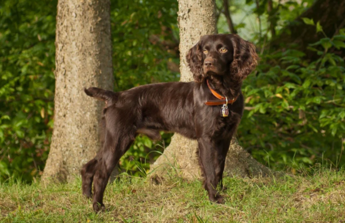The spaniel is a breed type of great antiquity, believed to have originated in Spain (the words “Spain” and “spaniel” being closely related). Spaniels have been bird hunters’ helpers since before the development of the rifle, when hunting dogs were used in tandem with nets.
For centuries, European and British spaniels were informally grouped as simply land spaniels and water spaniels. By the 19th century, however, when written breed standards, dog shows and field trials, and the very notion of purebred dogs began to gain traction in England, the various spaniels were classified as specific breeds. Among them was the Cocker, so called because they specialized in woodcock. These dogs, smaller than English Springer Spaniels but larger than English Toy Spaniels, were the ancestors of the modern Cocker Spaniel.
Until 1990, the Cocker was the most popular breed registered by the American Kennel Club. Today he ranks 25th, but he will always have a place among people who appreciate his moderate size, sweet nature and intelligence.











